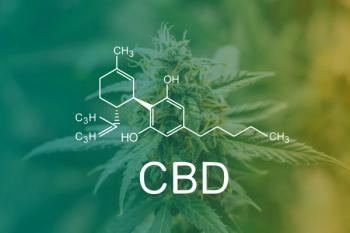
Cannabis Science and Technology
- January/February 2024
- Volume 7
- Issue 1
- Pages: 32-33
Considerations for Formulating Extracts with Terpenes
As markets mature, manufacturing terpene blends have become a new art form and a differentiating factor for potential therapeutic applications. Here, we dive deeper into the insights of terpene formulation considerations.
Cannabis extract manufacturers have exerted much effort in finding the proper ratios of major cannabinoids, tetrahydrocannabinol (THC) and cannabidiol (CBD), for their formulations. Formulators also ruminate over choosing cannabis flower based on their minor cannabinoid profiles associated with C. sativa and C. indica, like cannabinol (CBN), cannabigerol (CBG), and cannabichromene (CBC) ratios.
As markets mature, manufacturing terpene blends have become a new art form and a differentiating factor for potential therapeutic applications. Many consumers are paying more attention to the terpene levels in cannabis products.
Did you know that dried flower, fresh flower, and extracted terpenes all have different levels of terpenes at different stages? Continue reading for a primer on terpene formulation considerations.
Terpene Preservation Methods for Formulation
The cannabis plant has over 400 known terpenes (1), but drying and extraction minimize or degrade the potency of terpenes because of how volatile (2) they are.
Dried Flower for Terpene Extraction
When you buy dried flower for smoking, you are lucky to get 1-3% terpene content. If you extract the same dried flower instead, you will only capture half the terpenes (0.5-1.5%) (3), and in many cases, the method of extraction and distillation will degrade and change the existing terpenes.
The most common dried flower extraction method is ethanol extraction; to some extent, carbon dioxide (CO2) extraction is still used. Both techniques are less about the terpenes and more about the efficient and exact extraction of major and minor cannabinoids. Both will produce roughly the same extract, with CO2 enthusiasts claiming they will capture more terpenes and disregarding the capture of incredible amounts of undesirables and the ultimate use of ethanol at later stages. Either way, there is a limited amount of terpenes to catch in dried flower; you can only do so much if you have roughly 2% terpenes in dried flowers.
Neither ethanol nor CO2 extraction changes the fact that drying eliminates terpenes and there is not a way to preserve or extract small amounts of residual terpenes left after drying.
Fresh Flower for Terpene Extraction
On the other hand, the fresh plant (4), once harvested, may contain up to 15% terpenes. If you were to freeze this plant (fresh frozen) and use hydrocarbon extraction, you would produce an extract rich in both cannabinoids and terpenes. The bold flavor and smell are primarily from a robust amount of terpenes that are almost entirely captured if done right, which is why vaporizer and concentrate consumers gravitate to fresh frozen live resin products (5). The robust terpene mix has also given birth to live resin edibles because of the rich terpene mix.
Live resin is a premium product, but there is no consistency from one batch to the following, and many impurities are not beneficial. In one aspect, it is a part of the cannabis concentrate culture to have different yet similar experiences from product to product, as the best manufacturers rotate cultivars regularly.
Over the last few years, robust experiences with live resin have not only carried a premium in price, but the formulation process is straightforward and cheaper. Imagine half an operation’s cultivation staff is on the grow side and the other half is on post-cultivation. There is little need for post-cultivation with live resin because you simply cut the plant down, buck it, and freeze it. There are no weeks or up to a month of drying, curing, trimming, and bagging. Another factor is the live resin requires no additional steps as CO2 and ethanol do, like winterization, decarboxylation, and purification. What is extracted is practically sold as-is or transformed into another smokable product.
Consumers prefer the rich taste of live resin and are willing to pay a premium.
Sourcing Terpenes Extractions for Desired Formulation Effects
For the medical community and manufacturers trying to replicate the entourage effect (6) of the natural cannabis plant, sourcing dry flower may give you the right major and minor cannabinoid profile; a live resin will deliver the best terpene profile, and the only solution for consistency is to add back terpenes to get to the higher levels that once existed in a live plant.
Three primary sources of terpenes would work well to make new terpene-orientated therapies:
- Terpenes removed pre-extraction.
- Purchasing terpenes that are naturally derived from
cannabis plants. - Blending terpenes that are naturally derived from plants.
Removing terpenes pre-extraction and then adding those terpenes back in will result in a higher terpene mix and honor the original composition of the dried flower. Purchasing cannabis-derived terpenes and adding them to your formulas works well for mimicking popular strains from which terpenes were derived. Buying natural terpenes and mixing them to get the desired results is scientific; it leaves no random elements like growing inconsistencies that result in different terpene profiles from batch to batch. Rather than the standard 1-3% terpenes in dried flowers, you can boost the terpene levels to 15% to get a more pronounced terpene effect, which the living plant had.
To some consumers, ingesting these terpenes close to the plant’s original levels is perceived as more natural than drying or combusting the terpenes. All three are acceptable and sound depending on your desired effect and your method of approaching cannabis.
Tap Into Consumer Tastes Via Careful Terpene Formulation
As doctors and researchers increasingly study the effect of terpenes (7)—which to some extent is herbally known—their opinions of what works in cannabis become a blend of science and trial and error. There is no doubt that major and minor cannabinoids are essential, but manufacturing terpene profiles is the cherry on the top for consistent and long-term results. Imitating the entire plant and developing consistently good experiences is the holy grail of extraction cannabis, and terpenes play an increasingly important role in consumer experience and taste.
References
- Robertson, K. Common terpenes and their effects
https://www.healthline.com/health/cannabis-terpenes#list-of-terpenes . - Bueno, J.; Leuer, E.; Kearney, M.; Green, E. H.; Greenbaum, E. A., The preservation and augmentation of volatile terpenes in cannabis inflorescence. Journal of Cannabis Research, 2020, 2(1). DOI: 10.1186/s42238-020-00035-z
- Isidore, E.; Karim, H.; Ioannou, I., Extraction of phenolic compounds and terpenes from cannabis sativa L. by-products: From conventional to intensified processes. Antioxidants, 2021, 10(6), 942. DOI: 10.3390/antiox10060942
- André, A.; Leupin, M.; Kneubühl, M.; Pedan, V.; Chetschik, I., Evolution of the polyphenol and terpene content, antioxidant activity and plant morphology of eight different fiber-type cultivars of cannabis sativa L. cultivated at three sowing densities. Plants, 2020, 9(12), 1740. DOI: 10.3390/plants9121740
- Ward, A., Live Resin: What Is It And Why Is It So Popular? NuggMD, 2022.
- Ferber, S. G.; Namdar, D.; Hen-Shoval, D.; Eger, G.; Koltai, H.; Shoval, G.; Shbiro, L.; Weller, A., The “entourage effect”: Terpenes coupled with cannabinoids for the treatment of mood disorders and anxiety disorders. Current Neuropharmacology, 2020, 18(2), 87–96. DOI: 10.2174/1570159x17666190903103923
- Jaeger, K. Researchers published a record number of scientific studies about cannabis in 2022, NORML analysis shows
https://www.marijuanamoment.net/researchers-published-a-record-number-of-scientific-studies-about-cannabis-in-2022-norml-analysis-shows/ .
About the Author
Michael Sassano is the CEO of Somai Pharmaceuticals, one of the fastest growing EU-GMP certified cannabis medicine manufacturers and distributors in Europe.
How to Cite This Article
Sassano, M., Considerations for Formulating Extracts with Terpenes, Cananbis Science and Technology, 2024, 7 (1), 32-33.
Articles in this issue
almost 2 years ago
Automation and All-In-One Systemsalmost 2 years ago
Let’s Talk About It: Cannabis RemediationNewsletter
Unlock the latest breakthroughs in cannabis science—subscribe now to get expert insights, research, and industry updates delivered to your inbox.




